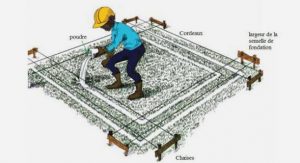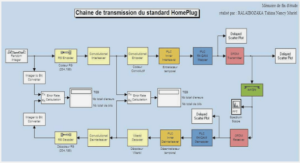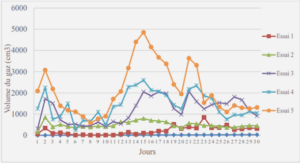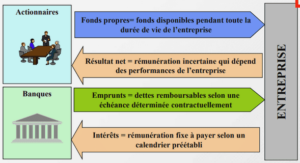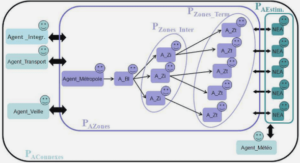Limit equilibrium methods
Limit equilibrium methods form the most common family of methods for slope stability calculations. Most limit equilibrium methods divide the mass inside a circular failure surface into a series of vertical slices in order to analyze the forces inside the slope. These methods are based on the concept of moment or force equilibrium in the soil or rock mass. The factor of safety is derived from the moment or force equilibrium equations, or sometimes from both. Limit equilibrium methods differ based on shape of failure surface (circular versus non-circular) and assumptions regarding inter slice forces. Limit equilibrium methods have shown great success in assessing slope stability in different conditions (Fredlund et al., 1981).
Three well-known methods are presented in the following sections. The first approach to limit equilibrium analysis was introduced by Fellenius (1936). He proposed the Ordinary method (Swedish method) of slices. This method neglects all inter-slice forces. Force equilibrium is assumed at failure. This method was improved by Janbu (1954) and Bishop (1955). For instance, Bishop’s Simplified method (1955) considers normal inter-slice forces (Fredlund et al., 1999).
With the Morgenstern & Price (1965) method, both force and moment equilibrium conditions are satisfied. The method also assumes that the inclination of the inter-slice force is known. The solution for this method needs an arbitrary assumption regarding the direction of the resulting inter-slice shear and normal forces (Abramson, 2002). The three methods that are presented below are available in the SLOPE/W software from GEO-SLOPE International (2016).
Shear strength reduction method
The shear strength reduction method (SRM) was first proposed by Matsui & San (1992). The method was applied by these authors in the 1980s and 1990s for embankment and excavation slopes. Their results proved that this method can be used to evaluate the stability of both types of slopes. Since then, other authors have applied this method (Donald & Giam 1988;Ugai & Leshchinsky 1995; Griffiths & Lane 1999).
With this technique, the slope’s shear strength parameters, its effective cohesion and its friction angle, are progressively reduced until failure occurs. A series of strength reduction factors (SRF) are used to divide the real shear strength parameters. The factor of safety in the SRM is defined as the ratio between the real shear strength parameters to the critical shear strength parameters that lead to failure.
COMSOL Multiphysics
COMSOL Multiphysics is a computer program based on the finite element method. Its geomechanics and subsurface flow modules allow different geotechnical problems to be studied (e.g., settlements). Unfortunately, COMSOL does not include native tools for slope stability calculations. As a consequence, the literature currently presents very few slope stability analyses based on COMSOL models.
One of the only examples of slope stability analysis based on a COMSOL model was presented by Shao et al. (2014). They used COMSOL to analyse the stability of slopes with a coupled dual-permeability. They computed local values of the factor of safety (Lu et al., 2012). The local factor of safety (LFS) is based on the comparison of the local Mohr-Circle in the slope body with a Mohr-Coulomb criterion. The local factor of safety is defined as a ratio between the shear stress on the failure envelope τ* and the actual shear stress magnitude τ. The main difference between the local factor of safety and the general factor of safety is that the LFS is computed at individual points of the studied slope but the general factor of safety is computed along a given slip surface for limit equilibrium methods (Zaruba & Mencl,1982) or is unique for a given slope for strength reduction methods.
Shao et al. (2015) applied linear-elastic behaviour to a fine-grained slope to obtain the stresses. Their local factor of safety values were influnced by the rainfall rate and pore water-pressure. This influence was observed to depend on the soil preoperies. The instability of the slope increases with increasing pore pressures.
MATLAB
New tools for COMSOL can be programmed using the MATLAB LiveLink, a MATLAB programming interface for COMSOL. MATLAB is a programming language for scientific computing. MATLAB has been used separately from COMSOL for a large number of geotechnical applications, such as determining the principal stresses in rock and soil and determining the hydraulic parameters during pumping tests (Zúñiga et al., 2007).
Independently from COMSOL, MATLAB was used by Zeng et al. (2009) to conduct slope stability analyses. They used an algorithm to search for the most critical slip surface for slopes.
Analysis of uniform slope
The uniform soil model has a height of 30 m and length of 43 m with slope height and length of 20m. This corresponds to an inclination of 45°. The soil has a unit weight of 18 kN/m³. Linear-elastic behaviour was assumed for the finite element analysis in COMSOL and SIGMA/W with a Young’s modulus of 1 GPa and a Poisson’s ratio of 0.3. Cohesion and friction angle of respectively 5 kPa and 20° were assumed based on Krahn (2003). Pore pressures were not considered in the analysis. With both MATLAB and SLOPE/W, the analysis was conducted using 30 slices. A total of 20 slip surfaces were used. The slip surfaces were specified in GEO-SLOPE using a grid for the slip surface centers and a set of slip surface radiuses. The same center coordinates and radiuses were used in the MATLAB script.
|
Table des matières
INTRODUCTION
CHAPTER 1 LITERATURE REVIEW
1.1 Limit equilibrium methods
1.1.1 Principles of limit equilibrium methods
1.1.2 Main limit equilibrium methods
1.1.2.1 Swedish method
1.1.2.2 Bishop method
1.1.2.3 Morgenstern and Price method
1.2 Finite element and finite difference methods
1.2.1 Gravity increase method
1.2.2 Shear strength reduction method
1.2.3 Limit equilibrium methods based on finite-element stress
1.2.3.1 Procedure for LEA based on finite-element stress
1.2.3.2 Advantages of using FESM in LEA
1.3 Slope stability analyses with COMSOL and MATLAB
1.3.1 COMSOL Multiphysics
1.3.2 MATLAB
1.4 Objectives
CHAPTER 2 METHODOLOGY
2.1 COMSOL model
2.2 MATLAB script
2.3 GEO-SLOPE model
CHAPTER 3 CODE VERIFICATION RESULTS AND DISCUSSION
3.1 Analysis of COMSOL-MATLAB and GEO-SLOPE models
3.1.1 Analysis of uniform slope
3.1.2 Analysis of slope with benches
3.1.3 Analysis of steep slope
3.1.4 Analysis of slope in layered soil deposit
3.2 General discussion
CONCLUSION
RECOMMENDATIONS
![]() Télécharger le rapport complet
Télécharger le rapport complet

